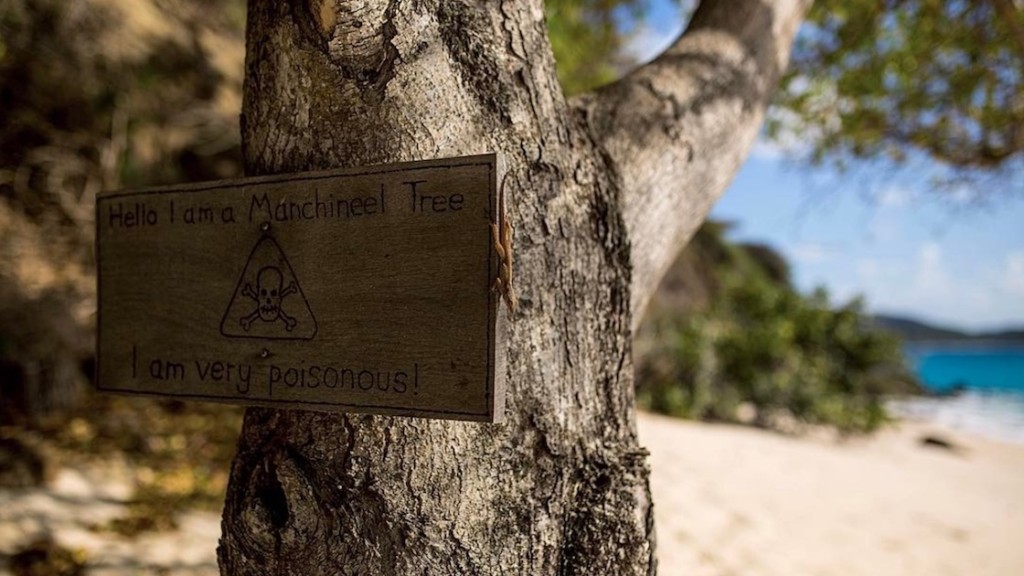Exploring the great outdoors is one of the best ways to spend your free time, but it doesn’t come without risks. While out treading the unbeaten path, surrounded by the natural wilderness, there are hidden dangers that could spoil your day. We’re talking about poisonous plants, specifically the ones that are poisonous to touch. Just brushing up against these seemingly benign florae will leave you breaking out in a rash, with more severe symptoms being blisters, painful scabs, and allergic reactions. Here are 5 poisonous plants found in the United States that you must avoid!
Manchineel Tree
The most poisonous plant on our list, the manchineel tree, Hippomane mancinella, has a toxic fruit that looks like a little apple. When Columbus arrived in the New World he called this fruit the ‘little apple of death’ because of the devastating effects it had on people who ate it. But it’s not just the fruit that is poisonous. Just touching this toxic tree, its branches or leaves, will leave you with burns and blisters. The milky looking sap also runs off the tree when it rains, so just sheltering under it during a shower is very dangerous!
Poison Ivy
A common poisonous plant that you’re likely to come across is poison ivy, Toxicodendron radicans. It likes to grow around trees, posts, and fences, so watch out when you’re crossing between gated fields or climbing over fallen trees. The sap of poison ivy contains a substance called urushiol, which is a clear oil that irritates the skin when you touch it. If urushiol gets in your eyes it can even cause temporary blindness, so avoid it at all costs!
Poison Sumac
This species of tree is part of the same genus at poison ivy and has very similar effects if touched. Poison sumac, Toxicodendron vernix, likes to grow around marshlands and swampy areas, sometimes reaching a height of 25 feet. For this reason, the lower branches and leaves can often come into contact with your face, which will induce swelling and irritating lumps. Blisters and scabs can also occur if you are particularly allergic to urushiol.
Poison Oak
Next up we have poison oak, also known as Toxicodendron diversilobum or Toxicodendron pubescen. The reason why it’s called poison oak is because the leaves resemble those of an oak tree, and this poison plant is even known to climb the trunk of an oak tree. It’s usually found as a shrub growing close to the ground, with three leaves sprouting from one stem. The effects it has when touched are similar to poison ivy and poison sumac, rashes, blisters, and sore skin, so if you see it leave it alone.
Stinging Nettle
Perhaps the most ubiquitous poisonous plant on the planet, the stinging nettle, Urtica dioica, is usually a common sight while out on a short woodland walk or on an epic forest hike. It seems to sprout up everywhere, and its leaves are covered in tiny needles that will stick into your skin if you touch them. Irritating lumps will pop up on your skin that beg to be itched, but resist and the pain will go away quicker!
That’s it for know, but we’ll be back soon with a list of poisonous plants that you shouldn’t eat, so stay tuned 🙂
Featured image: @billymay via Instagram
